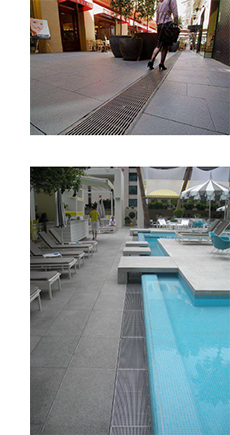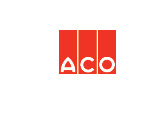The myths surrounding the slip resistance of grates
A HIGHER SLIP RATING DOES NOT NECESSARILY PROVIDE THE BETTER SOLUTION
With the increase in litigation and compensation for injuries caused by slips and falls, designers now must closely consider specifying grates and floor surfaces that comply with the appropriate Standard for slip resistance.
There is a perception that a higher slip resistance rating will provide a better solution. However, trip hazards can be introduced where a grate has a higher slip resistance rating compared with the surrounding floor surface.
 It is important for designers not to lose sight of the desired objective and specify a product that is relevant for the application with a suitable slip resistance rating.
It is important for designers not to lose sight of the desired objective and specify a product that is relevant for the application with a suitable slip resistance rating.
In June 2014, Standards Australia published a handbook, SA HB 198:2014 Guide to the specification and testing of slip resistance of pedestrian surfaces, to provide:
- Commentary on AS 4586-2013 Slip resistance classification of new pedestrian surface materials,
- Commentary on parts of the National Construction Code (NCC) that reference AS 4586 and slip resistance requirements of pedestrian surfaces in particular applications,
- General guidance for specifying pedestrian surface materials.
In order to assess the slip resistance of a grate or floor surface, three tests are specified in AS 4586:
- Wet pendulum for pedestrian areas that can become wet with rain water. This is designed to be applied to urban stormwater grates.
- Wet-barefoot inclining platform for wet areas where footwear/shoes are not worn. This is designed to be applied to urban stormwater grates in specific areas such as pools, waterparks, beach areas etc.
- Oil-wet inclining platform for commercial and industrial areas that can be contaminated with oil or grease. This is designed to be applied to internal industrial and commercial environments such as commercial kitchens and food processing factories.
Click here for further details and PDF version of this page



